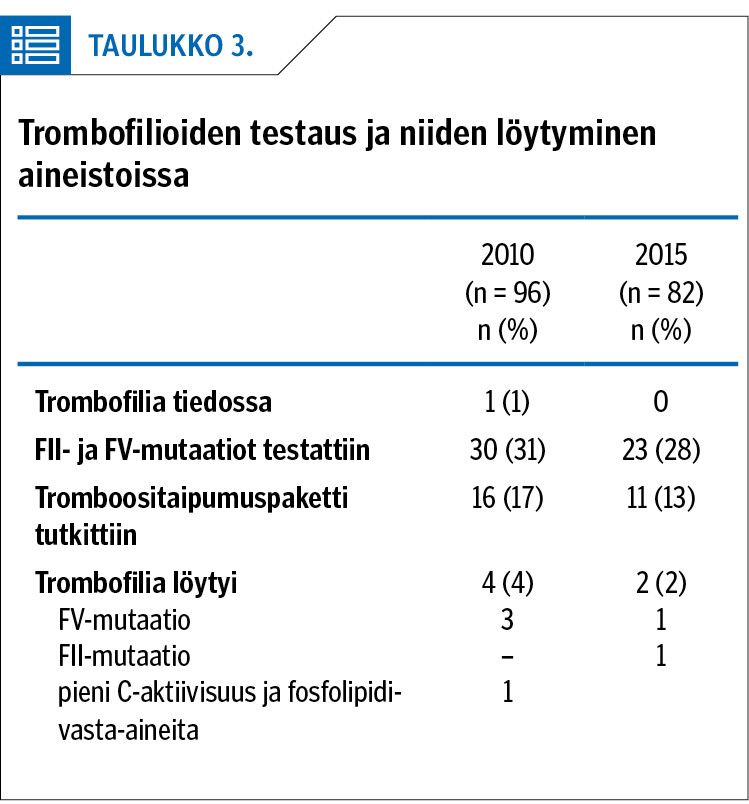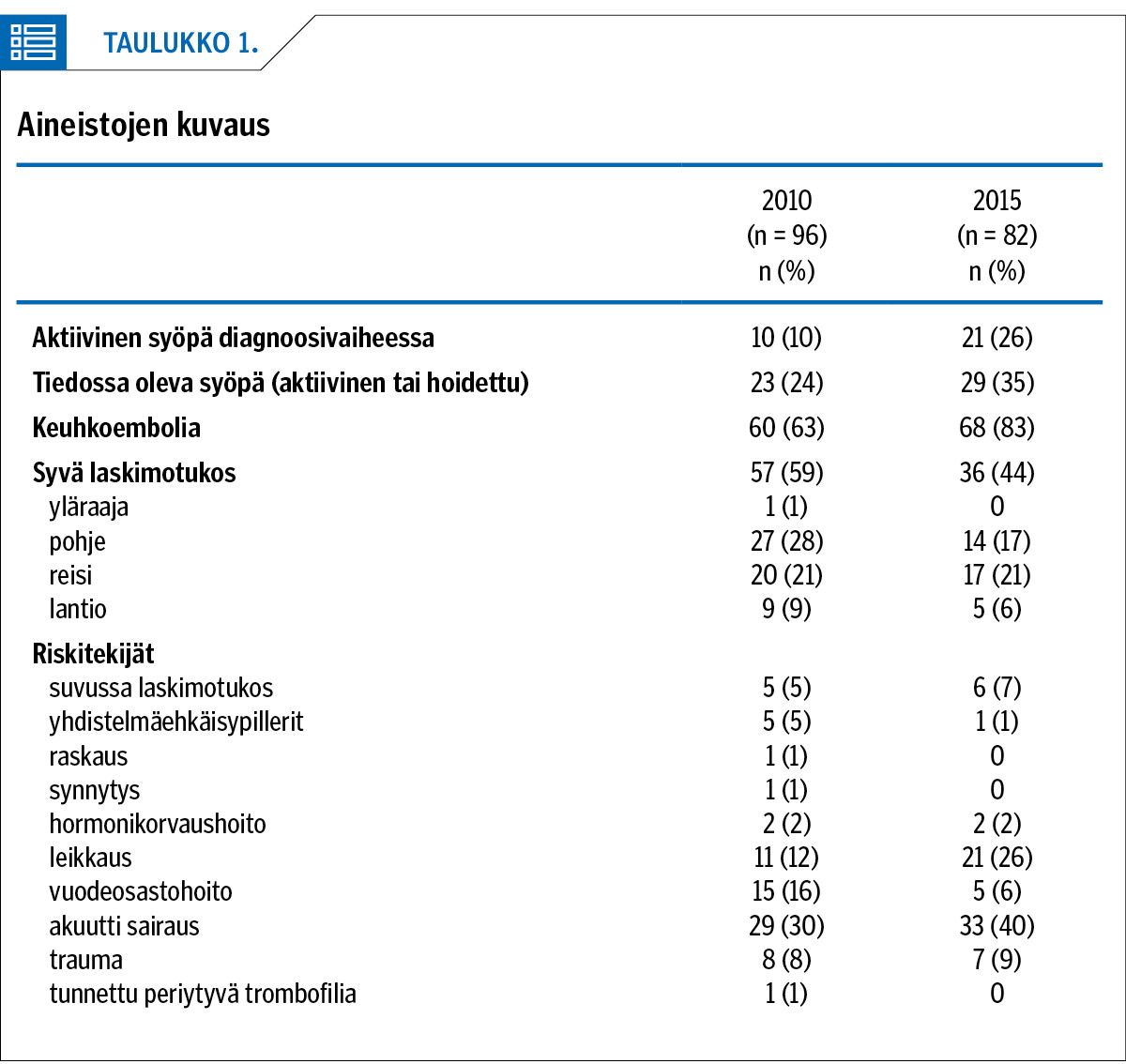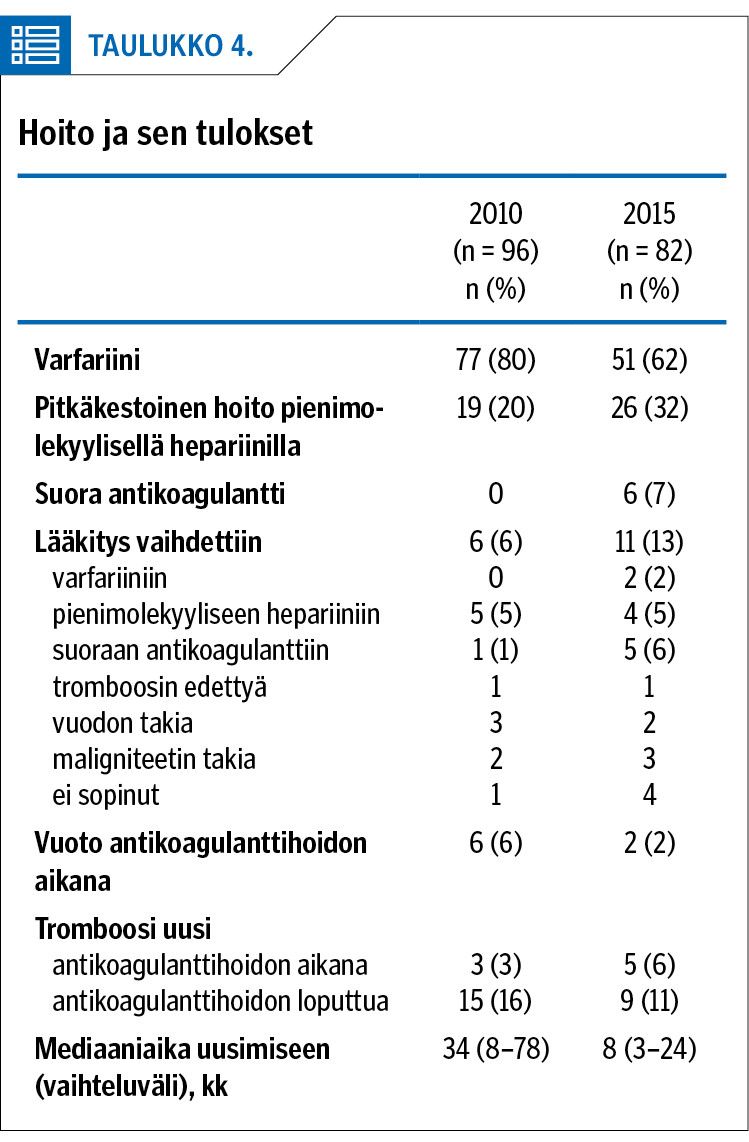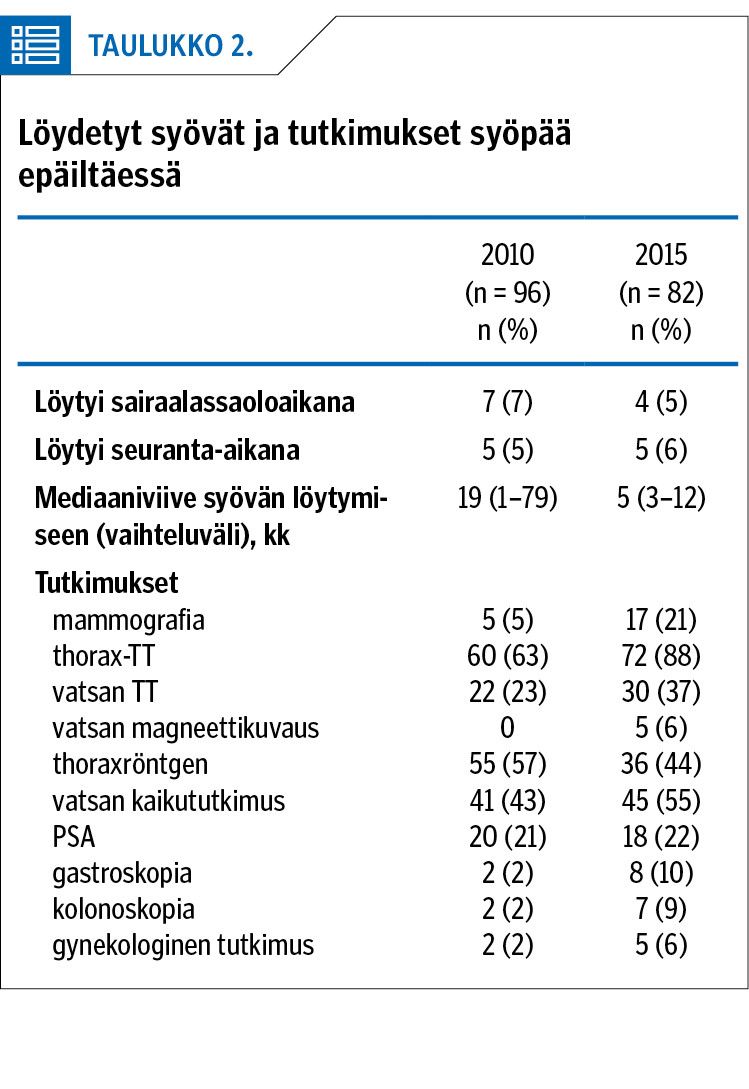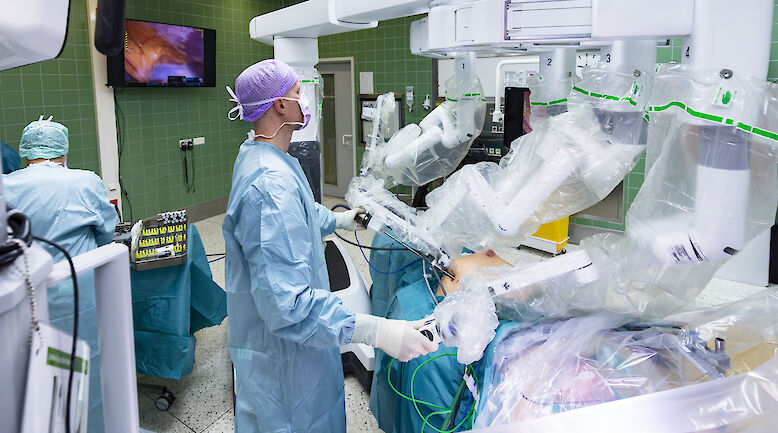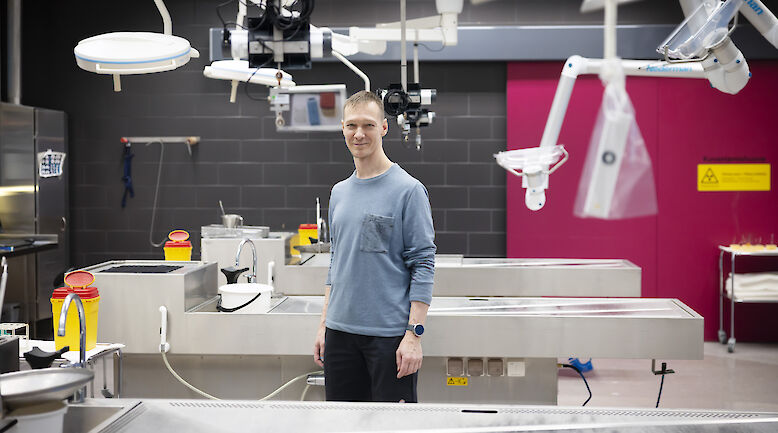Deep venous thrombosis and pulmonary embolism – what’s behind them?

Background There are many known risk factors for pulmonary embolism (PE) and deep venous thrombosis (DVT). In this study, we focused on cancers and genetic thrombophilia. These conditions may not be known before the patient comes to the hospital for the treatment of PE or DVT. We wanted to find out how widespread they are as underlying factors in the northern Finnish patient material.
Methods The study was carried out by going through the records of all more than 16-year-old patients suffering from their first PE/DVT and treated in Oulu University hospital during the periods 1.1.2010 - 30.6.2010 and 1.1.2015 - 30.6.2015. The patients were followed up on the basis of their medical files up to October 2017. Patients were not contacted in person.
Results In the 2010 patient material (n = 96), 7% of the PE/DVT patients had new cancer diagnosed during their hospital care and 5% had a new cancer diagnosis during the follow up period. In the 2015 patient material (n = 82), new cancers were found during hospital care in 5% of the PE/DVT patients and 6% had a cancer diagnosis during the follow up period. Most of the cancers were diagnosed within a year from their PE/DVT diagnosis. Genetic thrombophilia was found in only 4% of the 2010 patients and 2% of the 2015 patients. During anticoagulation treatment a new thrombosis occurred in 3% of the 2010 patients and 6% of the 2015 patients. A new thrombosis after anticoagulation treatment occurred in 16% of the 2010 patients and 11% of the 2015 patients. During anticoagulation treatment 6% of the 2010 patients and 2% of the 2015 patients had a bleeding episode that needed hospital care.
Conclusions When a patient is diagnosed with their first pulmonary embolism or deep vein thrombosis, the possibility of underlying cancer should be considered. In the light of our research, testing for genetic thrombophilia is not the first-line study for all patients.
